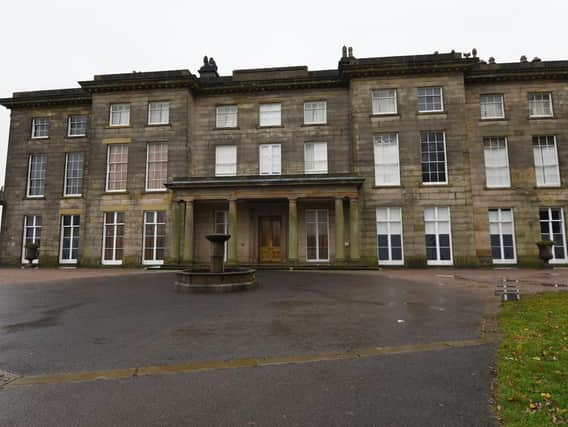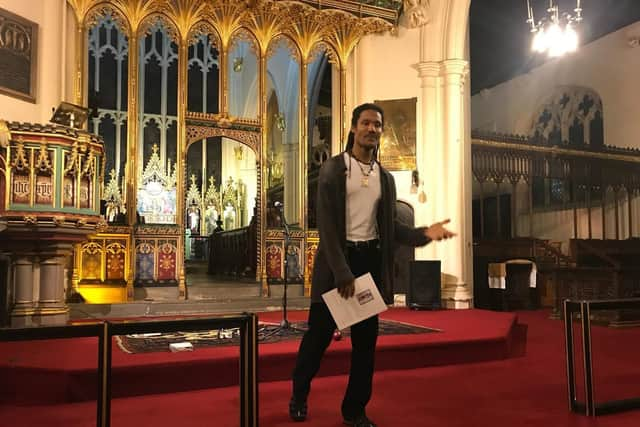Time for memorial recognising Wigan landmark's links to slave trade


Now, as the Black Lives Matter protests focus attention on racial injustice and prejudice, attention is turning to how the darker chapters of the history of the building and those who called it home should be commemorated.
Research several years ago found James Lindsay, the 7th Earl of Balcarres, was one of thousands of people who received payouts for the ending of the slave trade.
Advertisement
Hide AdAdvertisement
Hide AdHis father Alexander, the 6th Earl, had been governor of Jamaica and the payments to Earl Lindsay involved 11 separate cases totalling nearly £19,000 and thousands of enslaved people.


That history has been raised once again by artist Ripton Lindsay, the direct descendant of Alexander Lindsay, who came to Wigan last year to share his extraordinary personal story which took years of work to uncover.
Protests have recently taken place across the country, initially spurred by the killing of George Floyd by police in America but now talking extensively about Britain’s problems with racism both in its past and present.
Action is now being promised on statues, buildings and other landmarks which either celebrate or are named after slave owners or traders.
Advertisement
Hide AdAdvertisement
Hide AdAnd Ripton said Haigh Hall, which was being rebuilt during the period in which the compensation was paid, should have this part of its history prominently recognised.
He said: “There needs to be some sort of acknowledgement that money from the trans-Atlantic slave trade helped build Haigh Hall.
“A plaque should be placed somewhere people can read about the history of the place. The building itself is a monument and there should be a memorial in honour of the people who lost their lives.
“I just want people to know the truth so that we can move forward collectively as a society. This is a very poignant time, looking at something that should be addressed. In the UK it has been swept under the carpet, but we’re at a turning point now. People feel restless and the answers they seek are needed.
Advertisement
Hide AdAdvertisement
Hide Ad“It’s not about trying to erase history. We have to recognise what happened so we can avoid such atrocities happening again.”
Although the slave trade is a horrific chapter in British history, Ripton said he had no wish to damage Wiganers’ love for Haigh Hall despite the place’s association with it.
He said: “This shouldn’t change how people view Haigh Hall as a landmark if they have grown up enjoying visiting it.
“This is another story about the hall, the final part of it, although it is a challenge for us.
Advertisement
Hide AdAdvertisement
Hide Ad“I don’t come with any malice, I just want to share information with Wiganers. These things should be known.”
A team from University College London used parliamentary records from the National Archive in London to shine light on who received around £20m of taxpayers’ money when slavery in the Caribbean was abolished.
Shockingly, money was not paid to those who endured the plantations (who were tied to a new labour system under apprenticeships) but to their former owners to recompense them for the loss of property.
The largest settlement involving Earl Lindsay saw him awarded £9352 14s 10d - which could be worth as much as £11m today - for 454 slaves on the Marshall’s Pen and Martin Hill estate, which he owned.
Advertisement
Hide AdAdvertisement
Hide AdHe was also given £2928 11s 0d in 1835 for the 166 slaves on the plantation named after his family, with the rest of the payments being made in respect of freed military personnel.
In addition, he could claim compensation for one-third of all slaves employed by the British Army under contract from Messrs Atkinson and Hozier, in a deal arranged by his father while he was in the governor’s post between 1794 and 1801.
The largest of these nine settlements saw the earl claim £715 12s 5d for staff supporting the military camp at Stoney Hill and Up Park Camp. He also picked up £482 10s 9d for armed forces slaves at Spanish Town and Fort Augusta.
A search of the database for Wigan turns up one other result, Richard J. Watt. He was born in Shevington in 1724 but headed for Jamaica as a young man and became deeply involved in the slave trade as a merchant and an attorney.
Advertisement
Hide AdAdvertisement
Hide AdRipton has spoken of his complex relationship with the knowledge he is related to Alexander Lindsay, saying there are many things about the man he finds admirable.
However, while he was Lieutenant Governor of Jamaica he faced an armed rebellion led by a group of the people known as Maroons, with his actions during the insurrection still remembered on the island today.
Britain’s involvement in the slave trade and the atrocities carried out across the empire are very much back in the spotlight, with protestors in Bristol toppling the statue of infamous slave trader Edward Colston and dumping it into the city’s harbour.
That has inevitably led to discussions about the legacy of those who were in the trade or profited from it.
Advertisement
Hide AdAdvertisement
Hide AdWigan Council did not directly address the idea of a memorial at Haigh Hall but said it wanted to embrace all of the borough’s history and condemned racism.
A spokesperson said the Revealing Wigan Archives project at Leigh Town Hall was about portraying lives currently unrepresented in the collections and said the town hall was keen to speak to black and minority ethnic residents about the project.
And a joint statement from council leader Coun David Molyneux and chief executive Alison McKenzie-Folan said: “Wigan borough stands in solidarity with all those across the world who face racism or other forms of prejudice.
“We believe in a kinder, fairer world. A world where kindness, love and acceptance flourishes. And where prejudice and hate become notions of the past.
Advertisement
Hide AdAdvertisement
Hide Ad“It’s up to us to build this world, to learn from the past and stand up for what’s right.
“To remove discrimination and create a place where our differences are accepted and celebrated.
“So, let’s learn to love, celebrate our differences, teach tolerance, and most of all, Be Kind, always.”
The Black Lives Matter protest movement focuses on the injustices suffered by black people.
Advertisement
Hide AdAdvertisement
Hide AdHowever, Ripton says the enslaved people in the Caribbean are not the only ones who have been omitted from Haigh’s history who he would like to see recognised.
He said: “People put their energy into Haigh Hall through the generations.
“There are Wiganers whose families worked there and helped sustain the building, as cleaners, gardeners, landscapers. They should all be acknowledged.”
Find out more about the legacy of slave ownership in Britain at www.ucl.ac.uk/lbs/